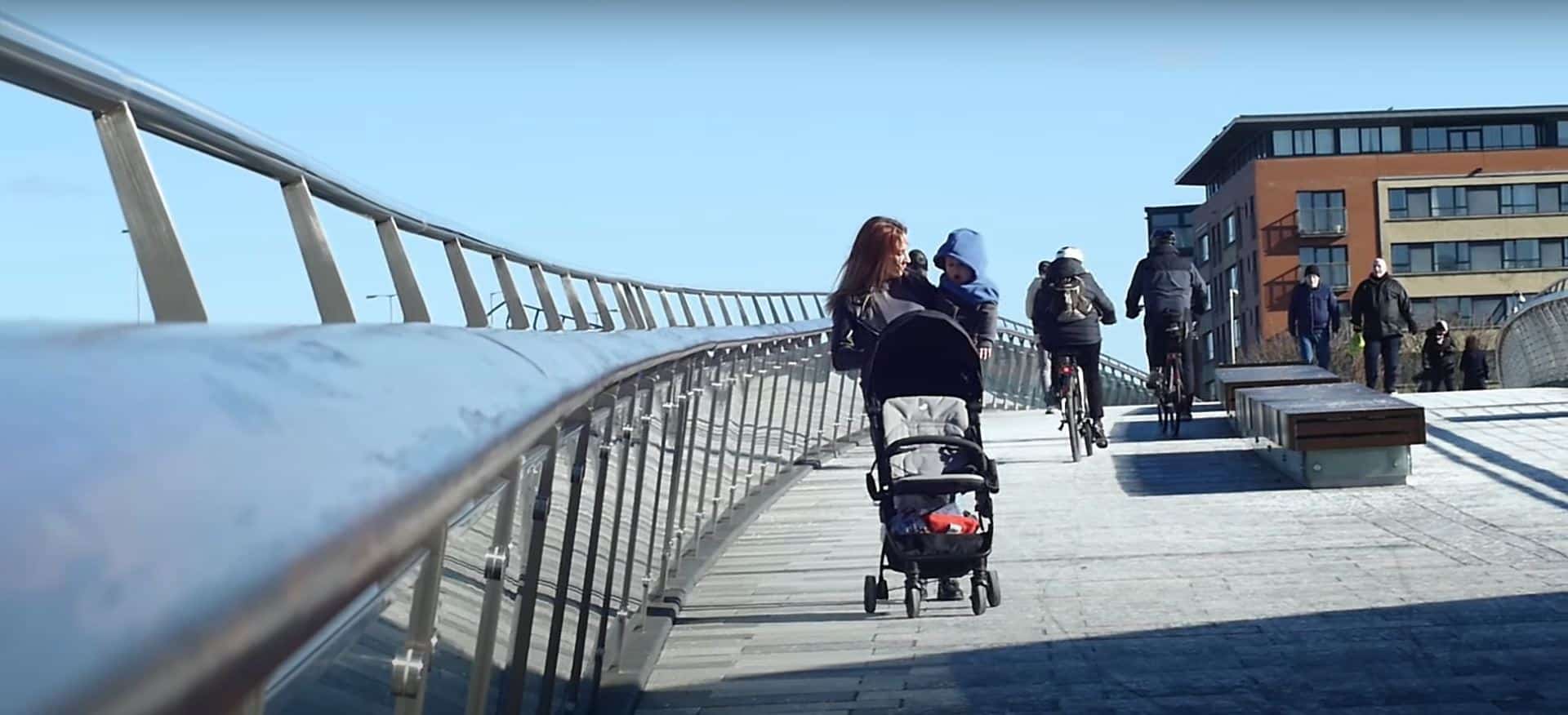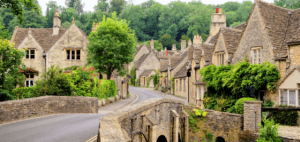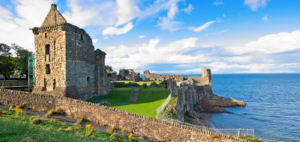Titanic Quarter – Belfast- Northern Ireland

Updated On: April 16, 2024 by Maha Yassin
Belfast, the capital of Northern Ireland, is a city steeped in history and culture, but one of its most iconic and enduring symbols is the Titanic Quarter. This remarkable waterfront development has revitalized a once-industrial area and pays homage to the city’s rich maritime heritage and the tragic story of the RMS Titanic. In this article, we will explore the Titanic Quarter, its history, development, attractions, and its lasting impact on the city of Belfast.
When Is the Best Time to Visit Belfast?
Belfast, with its rich history and diverse attractions, welcomes visitors year-round. However, the best time to visit depends on your preferences and interests. Late spring and summer (May to August) are ideal for those seeking mild weather and longer daylight hours. During this period, you can explore the city’s outdoor sites, parks, and gardens comfortably, with pleasant temperatures ranging from 15°C to 20°C.
Moreover, the summer brings a lively atmosphere to Belfast, with various festivals and cultural events. If you prefer fewer crowds and lower accommodation prices, consider visiting during the shoulder seasons of spring (March to April) and early autumn (September to October). These months offer a pleasant mix of decent weather and more affordable travel options, making them excellent choices for a visit to this vibrant Northern Irish city.
A Historical Perspective
To understand the significance of the Titanic Quarter, we must first delve into Belfast’s maritime history. The city has long been associated with shipbuilding and seafaring, with its shipyards gaining worldwide acclaim. However, the most famous and tragic chapter in this history was the construction of the RMS Titanic, one of the most luxurious and technologically advanced ships of its time.
The Titanic was built at the Harland and Wolff shipyard in Belfast, which played a crucial role in the city’s economy and identity. Tragically, the Titanic’s maiden voyage in 1912 ended in disaster when it struck an iceberg and sank, resulting in the loss of over 1,500 lives. The ship’s ill-fated journey left an indelible mark on the city’s history and collective memory.
Development of Titanic Quarter
The idea to transform the area around the former shipyards into a vibrant, mixed-use waterfront development began to take shape in the late 20th century. This vision aimed to rejuvenate the area, honour its maritime heritage, and boost the local economy. The Titanic Quarter Limited (TQL), a public-private partnership, was established to oversee the development of this ambitious project.
The transformation of the Titanic Quarter has been nothing short of remarkable. Formerly industrial wastelands have been replaced with modern, cutting-edge buildings and facilities. The project’s masterplan was carefully designed to balance the preservation of historic structures with introducing new, innovative elements.
Attractions and Highlights
Titanic Quarter is today’s thriving hub of culture, commerce, and education. It offers a range of attractions and facilities that cater to tourists and locals alike. Here are some of the key highlights:
- Titanic Belfast: The centrepiece of the Titanic Quarter is the Titanic Belfast visitor attraction. Shaped like the prow of a ship, this award-winning museum offers a comprehensive and immersive experience that tells the story of the Titanic, from its construction in Belfast to its fateful maiden voyage. The museum’s design is a tribute to the ship’s iconic design and is a must-visit for anyone interested in maritime history.
- SS Nomadic: Adjacent to Titanic Belfast is the SS Nomadic, a beautifully restored White Star Line vessel. Known as the “Titanic’s little sister,” the SS Nomadic transported passengers to and from the Titanic and is now open to the public for tours.
- Titanic Dock and Pump-House: Visitors can explore the massive dry dock where the Titanic was fitted out, providing a sense of the ship’s immense scale. With its steam engines, the accompanying pump house offers insight into the era’s technology.
- PRONI – Public Record Office of Northern Ireland: In the heart of the Titanic Quarter, PRONI houses a vast collection of historical records and archives, making it a valuable resource for researchers and genealogists.
- Odyssey Complex: This entertainment complex includes the SSE Arena, a state-of-the-art concert and sports venue, a cinema, restaurants, and bars, providing entertainment options for all ages.
- Titanic Hotel Belfast: Housed in the historic Harland and Wolff headquarters building, this luxurious hotel offers guests a chance to immerse themselves in the shipyard’s history while enjoying modern amenities and stunning harbour views.
Economic Impact
The Titanic Quarter has had a profound economic impact on Belfast and Northern Ireland. The development has created thousands of jobs, attracted significant private investment, and boosted tourism in the region. The area is a major tourist attraction and a thriving business district, with numerous companies choosing to locate their offices in the vibrant waterfront surroundings.
Education and Innovation
In addition to its cultural and economic significance, the Titanic Quarter is home to several educational institutions and innovative enterprises. The Belfast Metropolitan College, with its Titanic Campus, provides world-class education and training in various fields, including hospitality, tourism, and maritime studies. Moreover, Queen’s University Belfast has expanded its presence in the area, fostering research and innovation in partnership with local businesses.
The Future of Titanic Quarter
As Titanic Quarter continues to evolve, there are exciting plans for its future. The development is committed to sustainable growth, focusing on green spaces, community engagement, and further integration of cultural and historical elements. Future projects include the Maritime Mile, which will extend the Titanic Quarter’s visitor experience along the waterfront and connect with other historic sites in the city.
Explore Belfast’s Rich Tapestry of Attractions
While the Titanic Quarter in Belfast is undoubtedly a must-visit destination, the city offers many attractions easily accessible from this historic waterfront district. From captivating museums to lush gardens, Belfast has something to offer every type of traveller. In this article, we’ll take you through some remarkable attractions near the Titanic Quarter, creating a perfect blend of history, culture, and natural beauty.
Ulster Museum
Just a short drive from the Titanic Quarter, the Ulster Museum is a treasure trove of art, history, and natural science. With collections that span millennia, this museum showcases everything from ancient artefacts to contemporary art pieces. Highlights include:
- The Egyptian mummies.
- The renowned Spanish Armada collection.
- The mesmerizing Game of Thrones tapestry.
Botanic Gardens
Adjacent to the Ulster Museum, the Botanic Gardens offer a peaceful oasis in the city’s heart. These beautifully landscaped gardens feature exotic plant collections, elegant greenhouses, and the iconic Palm House, a Victorian-era glasshouse filled with tropical plants. It’s a perfect spot for a stroll or a picnic on a sunny day.
Queen’s University Belfast
As you explore the area around Titanic Quarter, you’ll notice the striking architecture of Queen’s University Belfast. Founded in 1845, this prestigious institution boasts a stunning campus that combines historic and modern buildings. Visitors can admire the Lanyon Building, inspired by the architecture of Magdalen College, Oxford, or take a guided tour to learn more about the university’s rich history and notable alums.
St. George’s Market
Head to St. George’s Market, one of the city’s oldest attractions, to taste Belfast’s vibrant food and artisan scene. Located a short distance from Titanic Quarter, this bustling market is open on Fridays, Saturdays, and Sundays. You’ll find various stalls selling everything from fresh produce and handmade crafts to international cuisine and live music performances.
Crumlin Road Gaol
Step back in time and explore the history of Belfast’s infamous prison at Crumlin Road Gaol. Located just north of the city centre, this Victorian-era jail offers guided tours that delve into the lives of inmates and the prison’s tumultuous past. It’s a fascinating journey through Belfast’s history, with eerie tales of its former residents.
SS Nomadic
While in the Titanic Quarter, visit the SS Nomadic, often dubbed the “Titanic’s little sister.” This beautifully restored vessel once served as a tender to the Titanic, ferrying passengers and mail. Today, you can explore its decks and learn about its role in the Titanic story, making it a natural extension of your Titanic Quarter experience.
Crumlin Road Courthouse
Just a stone’s throw away from the Crumlin Road Gaol, the Crumlin Road Courthouse is another architectural gem that offers a glimpse into Belfast’s past. This historic courthouse, which dates back to 1850, has been painstakingly restored and now hosts guided tours. Visitors can explore the majestic courtroom, witness boxes, and even the underground tunnel connecting the courthouse to the prison.
Conclusion
The Titanic Quarter in Belfast is a testament to the city’s resilience, creativity, and commitment to preserving its rich maritime heritage. From the tragic story of the Titanic to the vibrant and thriving waterfront district it has become today, this development has revitalized a once-declining area, creating jobs, attracting visitors, and celebrating Belfast’s maritime legacy.
As the Titanic Quarter continues to grow and evolve, it serves as a shining example of urban regeneration and a living tribute to the spirit of a city that has risen above its tragic past to create a brighter future. Whether you’re a history enthusiast, a cultural explorer, or a business traveller, the Titanic Quarter is a must-visit destination that showcases Belfast’s remarkable journey from shipbuilding to a city reborn.






